Critical Care Medicine Fellowship Program
Message from the Program Director
The goal of the Critical Care Medicine Anesthesiology Fellowship at the University of Maryland is to train leaders in critical care medicine. The critical care program has one of the highest volumes in the country, and offers a complex patient mix that allows fellows to grow tremendously in their skills and confidence. Fellows in our program are exposed to the full spectrum of critical care medicine including complex vascular procedures, major aortic surgery, multi-system trauma, complex open neuro-aneurysm repairs, as well as liver, heart, lung, kidney, and pancreas transplants. Additionally, fellows in our program become experts in managing continuous renal-replacement therapy, as it is managed independently within the intensive care units in the hospital.
The University of Maryland Medical Center is a regional ECMO referral center with over 500 adult ECMO runs during the last 5 years. We are the third largest adult liver transplantation center in the country and are one of the few centers in the country who utilize Molecular Adsorbent Recirculating System (MARS) therapy as temporary hepatic replacement for acute liver failure. Over 25% of our patients have a MELD score 31-40 at the time of transplant, which is a higher proportion than other centers in our region (20.7%) and across the country (21.4%). In addition, 6.4% of our liver transplants occur in patients listed as Status 1A, meaning that they have acute liver failure with a life expectancy of only a few hours to a few days without a transplant. They are managed post-operatively exclusively by our team in the Surgical Intensive Care Unit. The R. Adams Cowley Shock Trauma Center at the University of Maryland Medical Center is the world’s first free-standing trauma center and serves as the Primary Adult Resource Center (PARC) for the state of Maryland’s EMS system. We are one of the highest-volume trauma centers in the United States and see over 7,600 critically ill trauma patients annually. We are closely affiliated with the Maryland State Police Aviation Command, which provides aeromedical critical care support through 7 helicopter bases stationed throughout the state.
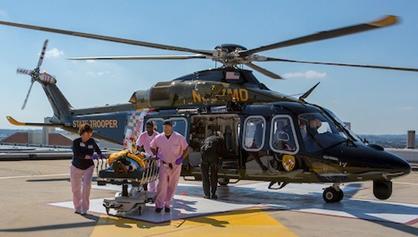 In addition to training outstanding clinicians, we are committed to our fellows’ professional growth and achieving the highest possible levels in all ACGME competencies. Our diverse faculty provides fellows with the opportunity to learn from physicians of all backgrounds, and recent graduates have had excellent success in both academic medicine and private practice. Our division offers unique research opportunities with nationally recognized faculty in areas that include bleeding, coagulation, sepsis, trauma, and shock.
In addition to training outstanding clinicians, we are committed to our fellows’ professional growth and achieving the highest possible levels in all ACGME competencies. Our diverse faculty provides fellows with the opportunity to learn from physicians of all backgrounds, and recent graduates have had excellent success in both academic medicine and private practice. Our division offers unique research opportunities with nationally recognized faculty in areas that include bleeding, coagulation, sepsis, trauma, and shock.
We welcome your interest in our training program and look forward to meeting you.
Jonathan Chow, MD, Assistant Professor, Program Director View Profile
Learn More about the Critical Care Medicine Fellowship Program
Overview
The Department of Anesthesiology has two ACGME-approved critical care fellowship positions. One position is a traditional, 1-year critical care training pathway, while the other is a combined 2-year NIH research and clinical pathway. Given our current volume in the 189 beds in 10 adult intensive care units at the University of Maryland, our critical care fellows have ample opportunity to gain experience in managing the most complex and interesting patients in the intensive care unit. Each critical care fellow will participate in a total of 9 months in the various intensive care units, with the remainder 3 months on elective rotations such as echocardiography, infectious disease, cardiology, nephrology, palliative care, and liver transplant anesthesia.
Research Training

All critical care fellows are allotted ample time to pursue scholarly activities and the faculty are highly supportive of these endeavors. The fellows have a professional development/education fund that can be used to attend meetings or to purchase educational materials.
The Shock, Trauma, and Anesthesiology Research organized research center (STAR-ORC) is a world-class, multi-disciplinary research and educational center focusing on neurological injuries, critical care, organ support, resuscitation, surgical outcomes, and injury prevention. It serves as the research umbrella for the Department of Anesthesiology and the Program in Trauma. Each fellow will have an assigned mentor who is a member of the Critical Care Anesthesiology faculty. The fellows will have a defined project and will be expected to submit findings for presentation at grand rounds or at a national meeting, typically the annual Society of Critical Care Medicine or Society of Critical Care Anesthesiologists meeting. Areas of active investigation in the division include coagulation and hemostasis, end points of resuscitation, aeromedical critical care, and rescue therapy for vasoplegic shock.
Echocardiography Training
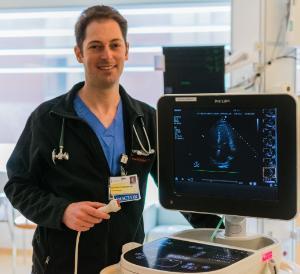 Our fellows gain competence in surface TTE training with one month of dedicated ECHO time at the R. Adams Cowley Shock Trauma Center with a sonographer and an attending intensivist. During this month, fellows gain competence in TTE by performing and interpreting all of the ECHOs requested by the intensive care units. A uniquely formulated quantitative echocardiogram, the focused rapid echocardiographic examination (FREE), was pioneered at the R Adams Cowley Shock Trauma Center that is a hybrid of an anatomic structural assessment and a rapid point-of-care cardiac echo. It is used as the primary tool to assess the hemodynamic status of all patients in the intensive care units at our trauma center. During the fellowship, our fellows will perform well over the required number of TTE examinations for the Critical Care Echocardiography examination that will be offered by the National Board of Echocardiography starting in 2019. Previous fellows have also attained basic perioperative TEE certification through dedicated elective time on a TEE month.
Our fellows gain competence in surface TTE training with one month of dedicated ECHO time at the R. Adams Cowley Shock Trauma Center with a sonographer and an attending intensivist. During this month, fellows gain competence in TTE by performing and interpreting all of the ECHOs requested by the intensive care units. A uniquely formulated quantitative echocardiogram, the focused rapid echocardiographic examination (FREE), was pioneered at the R Adams Cowley Shock Trauma Center that is a hybrid of an anatomic structural assessment and a rapid point-of-care cardiac echo. It is used as the primary tool to assess the hemodynamic status of all patients in the intensive care units at our trauma center. During the fellowship, our fellows will perform well over the required number of TTE examinations for the Critical Care Echocardiography examination that will be offered by the National Board of Echocardiography starting in 2019. Previous fellows have also attained basic perioperative TEE certification through dedicated elective time on a TEE month.
To learn more about our focused rapid echocardiographic examination:
Bridging the Gap - Hybrid Cardiac ECHO in the Critically Ill
Didactics
The didactic program includes a weekly lecture series (see sample schedule), monthly journal clubs, morbidity and mortality conferences, and simulation. In addition, the fellow attends daily lunchtime lecture series developed for critical care fellows of all specialties (surgical/trauma critical care, pulmonary critical care, and neuro critical care). We invite world class experts and researchers in critical care medicine to give these lectures, and many of these lectures are recorded and posted on the University of Maryland Critical Care Project website.
Facilities
University of Maryland Medical Center (UMMC)

R. Adams Cowley Shock Trauma Center (STC)
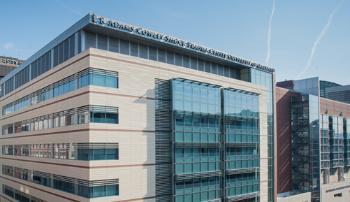 Seeing over 7,600 critically injured patients each year, the newly built, 140,000 square foot Shock Trauma Tower is adjacent to UMMC and houses 9 floors of patient care space in 64 private ICU rooms, 10 dedicated operating rooms, 18 new PACU bays, and a new simulation center. An additional helipad was built to accommodate the heaviest of helicopters (i.e. The President of the United States’ Marine One), increasing the total capacity of the helipad to 4 helicopters at any given time. Referrals for admission come from Maryland and its surrounding states. Adjacent to the operating room is the world-renowned Trauma Resuscitation Unit (TRU), a 26 bed bay that serves as the receiving area for all trauma patients at the University of Maryland and is run in collaboration with the Department of Surgery and Department of Anesthesiology. In addition, the Critical Care Resuscitation Unit (CCRU) is an innovative state-of-the-art 6-bed receiving area that allows critically ill inter-facility transport patients to receive critical care while awaiting an ICU bed. The CCRU sees over 1,900 patients annually with neurosurgical, neurological, vascular, cardiac, and medical emergencies. The Lung Rescue Unit (LRU) is another innovative 6-bed unit that provides ECMO services for patients in acute cardiac or respiratory failure outside of the CSICU. In addition, fellows gain vast clinical experience through the NeuroTrauma, Multi-Trauma, and Select-Trauma Critical Care Units.
Seeing over 7,600 critically injured patients each year, the newly built, 140,000 square foot Shock Trauma Tower is adjacent to UMMC and houses 9 floors of patient care space in 64 private ICU rooms, 10 dedicated operating rooms, 18 new PACU bays, and a new simulation center. An additional helipad was built to accommodate the heaviest of helicopters (i.e. The President of the United States’ Marine One), increasing the total capacity of the helipad to 4 helicopters at any given time. Referrals for admission come from Maryland and its surrounding states. Adjacent to the operating room is the world-renowned Trauma Resuscitation Unit (TRU), a 26 bed bay that serves as the receiving area for all trauma patients at the University of Maryland and is run in collaboration with the Department of Surgery and Department of Anesthesiology. In addition, the Critical Care Resuscitation Unit (CCRU) is an innovative state-of-the-art 6-bed receiving area that allows critically ill inter-facility transport patients to receive critical care while awaiting an ICU bed. The CCRU sees over 1,900 patients annually with neurosurgical, neurological, vascular, cardiac, and medical emergencies. The Lung Rescue Unit (LRU) is another innovative 6-bed unit that provides ECMO services for patients in acute cardiac or respiratory failure outside of the CSICU. In addition, fellows gain vast clinical experience through the NeuroTrauma, Multi-Trauma, and Select-Trauma Critical Care Units.
Rotations
Core Rotations
- 4 months, Surgical ICU (SICU, University of Maryland Medical Center)
- 1 month, Neurological ICU (University of Maryland Medical Center)
- 1 month, Neuro Trauma ICU (R. Adams Cowley Shock Trauma Center)
- 1 month, Multi Trauma ICU (R. Adams Cowley Shock Trauma Center)
- 1 month, Cardiac Surgery ICU (CSICU, University of Maryland Medical Center)
- 1 month, Medical ICU (MICU, University of Maryland Medical Center)
- 3 months, Elective rotations
Elective Rotations
- Critical Care radiology and neuroradiology
- Critical Care transthoracic and/or transesophageal echocardiography
- Infectious Diseases
- Nephrology
- Cardiology
- Palliative Care
- Liver transplant and/or Trauma anesthesiology
- Lung Rescue Unit (ECMO)
- Research
Fellowship Alumni
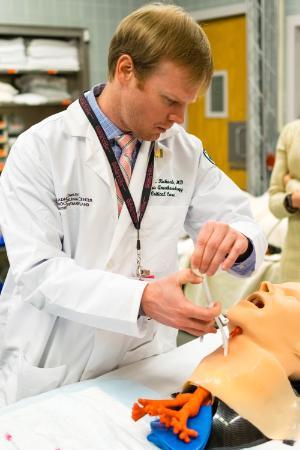 2009
2009
Rom Stevens, MD
Professor
Rosalind Franklin University of Medicine and Sciences
Chicago, IL
2010
Elizabeth Riccobono, DO
Staff Anesthesiologist
AtlantiCare Regional Medical Center
Atlantic City, NJ
2011
Christopher Franklin, MD
Intensivist
Navicent Health
Kathleen, Georgia
2012
Ilene Lewis, MD
Assistant Professor
Medical College of Wisconsin
Milwaukee, WI
2013
Tara Paterson, MD
Assistant Clinical Professor
Olive View – UCLA Medical Center
Los Angeles, CA
2014
Kevin Blaine, MD, MPH
Assistant Professor
Keck School of Medicine of USC
Los Angeles, CA
2014
Jessica Hobbs, MD
Staff Anesthesiologist
Carroll Hospital
Westminster, MD
2015
Justin Richards, MD
Assistant Professor
R. Adams Cowley Shock Trauma Center
University of Maryland School of Medicine
Baltimore, MD
2016
Frederick Powell, MD
Staff Anesthesiologist
Colquitt Regional Medical Center
Moultrie, GA
2017
Zackary Chancer, MD
Assisant Professor
University of Maryland School of Medicine
Baltimore, MD
Current Fellows
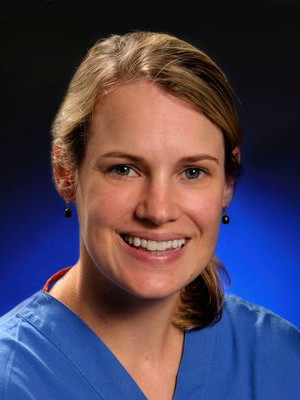
Allison Lankford, MD
- Residency: Palmetto Health/ University of South Carolina
Recent Publications
-
Deatrick KB, Galvagno SM, Mazzeffi MA, et al. Pilot study evaluating a non-titrating, weight-based anticoagulation scheme for patients on veno-venous extracorporeal membrane oxygenation. Perfusion. May 2019:267659119850024. PMID:31122144.
Mazzeffi M, Galvagno S, Menaker J. VV ECMO Cannulation: Should I Stay or Should I Go? J Cardiothorac Vasc Anesth. 2019;33(7):1871-1872. PMID:30612931.
Anders M, Rock P, Cartron A, Chow J, Henderson R, Martz D, Tanaka K, Mazzeffi M. Isolated platelet concentrate transfusion during surgery: a single-center observational cohort study. Transfusion. 2019;59(5):1661-1666. PMID:30693940.
Galvagno SM, Shah NG, Cornachione CR, Deatrick KB, Mazzeffi MA, Menaker J. Long term veno-venous extracorporeal life support without intravenous anticoagulation for diffuse alveolar hemorrhage. Perfusion. February 2019:267659119826828. PMID:30744494.
Menaker J, Galvagno S, Rabinowitz R, Mazzeffi MA, et al. Epidemiology of blood stream infection in adult extracorporeal membrane oxygenation patients: A cohort study. Heart Lung. 2019;48(3):236-239. PMID:30686618.
Mazzeffi MA, Kon Z, Deatrick K, Menaker J. Houston, ECMO Has Landed. J Cardiothorac Vasc Anesth. 2019;33(4):908-909. PMID:30115518.
Mazzeffi MA, Tanaka K, Roberts A, et al. Bleeding, Thrombosis, and Transfusion With Two Heparin Anticoagulation Protocols in Venoarterial ECMO Patients. J Cardiothorac Vasc Anesth. 2019;33(5):1216-1220. PMID:30181084.
Mazzeffi M, Kon Z, Menaker J, Johnson DM, Parise O, Gelsomino S, Lorusso R, Herr D. Large Dual-Lumen Extracorporeal Membrane Oxygenation Cannulas Are Associated with More Intracranial Hemorrhage. ASAIO J. November 2018. PMID:30398981. - Williams B, Sikorski R, Anders M, Galvagno S, Rock P, Mazzeffi M. Should We Use Perioperative Transesophageal Echocardiography More in Non-Cardiac Surgery? J Cardiothorac Vasc Anesth. 2018;32(3):e71-e73. PMID:27474334.
How to Apply
Applicants who have successfully completed their anesthesiology residency in an ACGME accredited program with an interest in Critical Care Anesthesiology are encouraged to apply. Applicants should register with SF Match using Program ID #4860. For fellowship positions for 2020-2021, we start accepting applications in December 2018. Selected applicants will be invited for a formal interview between December 2018 and April 2019.
Your file is complete when we receive a completed Central Application Service (CAS) form from SF Match.
We currently have 1 two-year NIH fellowship position open for 2019-2020. Interested applicants should inquire with Dr. Jonathan Chow (JChow@som.umaryland.edu).

.jpg)
.png)